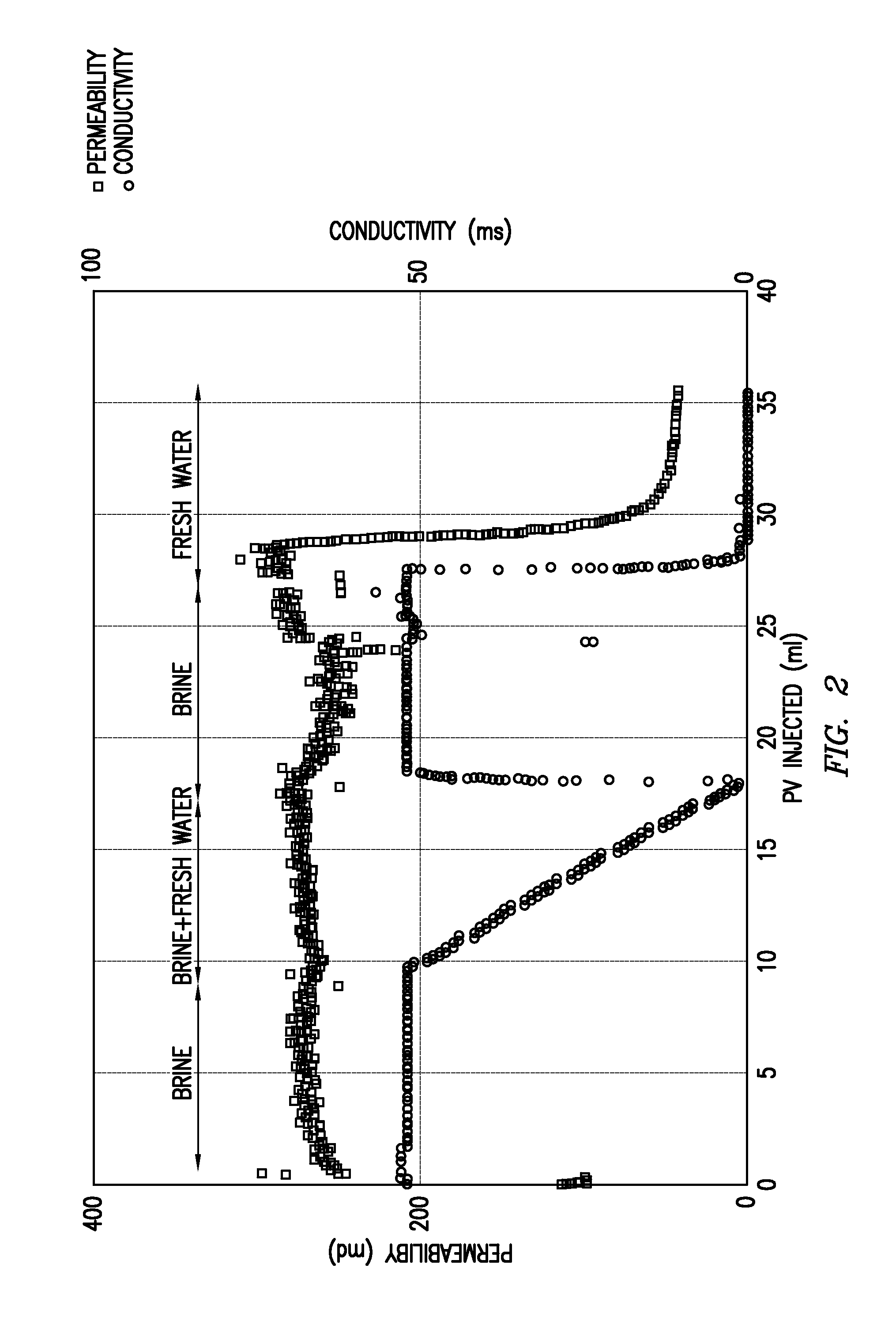Low salinity reservoir environment
a reservoir environment and low salinity technology, applied in the direction of fluid removal, chemistry apparatus and processes, borehole/well accessories, etc., can solve the problems of increasing the water-oil ratio to an uneconomic level, leaving behind a significant portion of the total amount of oil in the reservoir, and unable to penetrate into the matrix, etc., to achieve the effect of enhancing oil recovery and high salinity
- Summary
- Abstract
- Description
- Claims
- Application Information
AI Technical Summary
Benefits of technology
Problems solved by technology
Method used
Image
Examples
example
[0024]From simulation results, it was discovered that an optimum salinity profile embodying principles of the present invention provided a higher oil recovery.
[0025]A sandstone core sample, 1.5 inch in diameter and 3 inches in length, which was vacuum saturated with high salinity brine (35,000 ppm) was placed in a coreholder. Next, a 500 psi overburden pressure is applied to the core sample.
[0026]The coreholder, containing the core sample, is then connected to an automatic controlled pump, which delivers a mixture of high salinity brine and low salinity brine at a chosen flow rate Q calculated based on the physical characteristics of the sample. Pressures upstream and downstream of the sample were recorded using high pressure transducers for permeability determination. The permeability was computed using Darcy's law for one dimensional flow of a homogeneous fluid through porous media.
[0027]After the pressure drop across the core stabilized and the high salinity brine permeability wa...
PUM
| Property | Measurement | Unit |
|---|---|---|
| temperatures | aaaaa | aaaaa |
| diameter | aaaaa | aaaaa |
| diameter | aaaaa | aaaaa |
Abstract
Description
Claims
Application Information
 Login to View More
Login to View More - R&D
- Intellectual Property
- Life Sciences
- Materials
- Tech Scout
- Unparalleled Data Quality
- Higher Quality Content
- 60% Fewer Hallucinations
Browse by: Latest US Patents, China's latest patents, Technical Efficacy Thesaurus, Application Domain, Technology Topic, Popular Technical Reports.
© 2025 PatSnap. All rights reserved.Legal|Privacy policy|Modern Slavery Act Transparency Statement|Sitemap|About US| Contact US: help@patsnap.com


